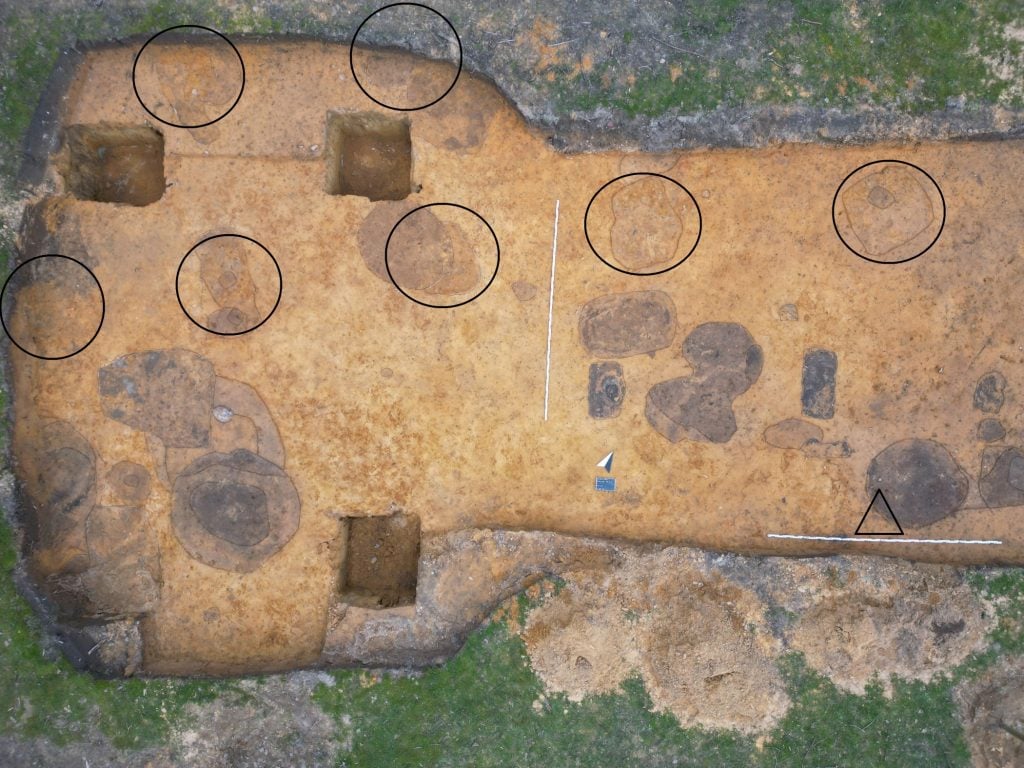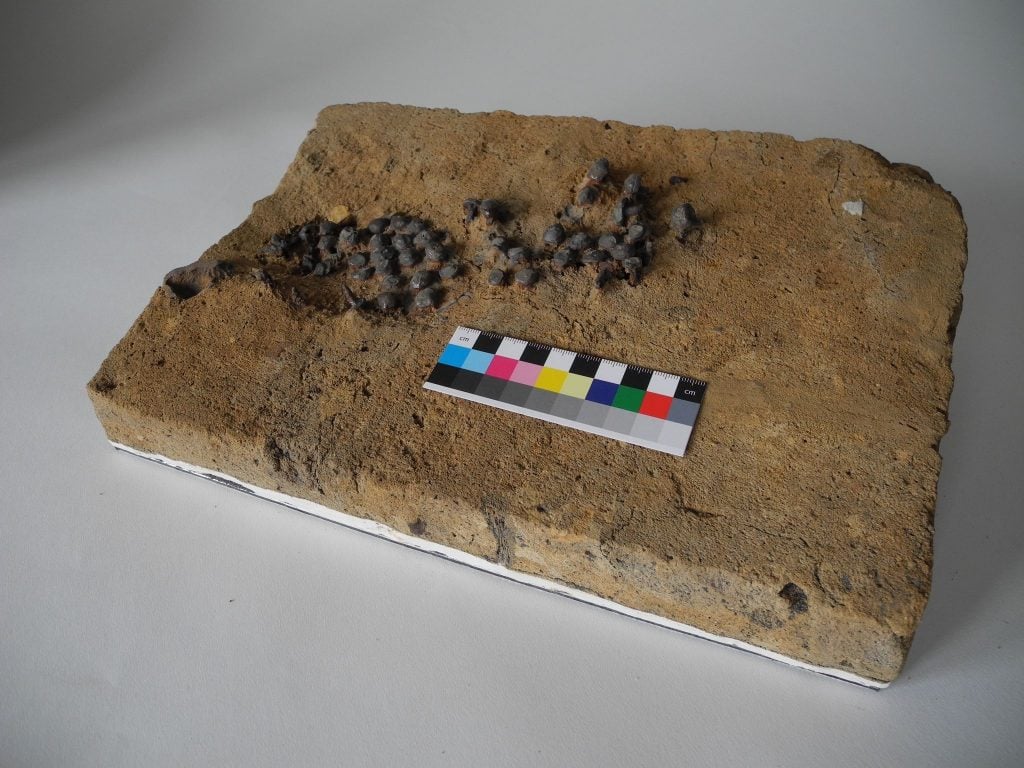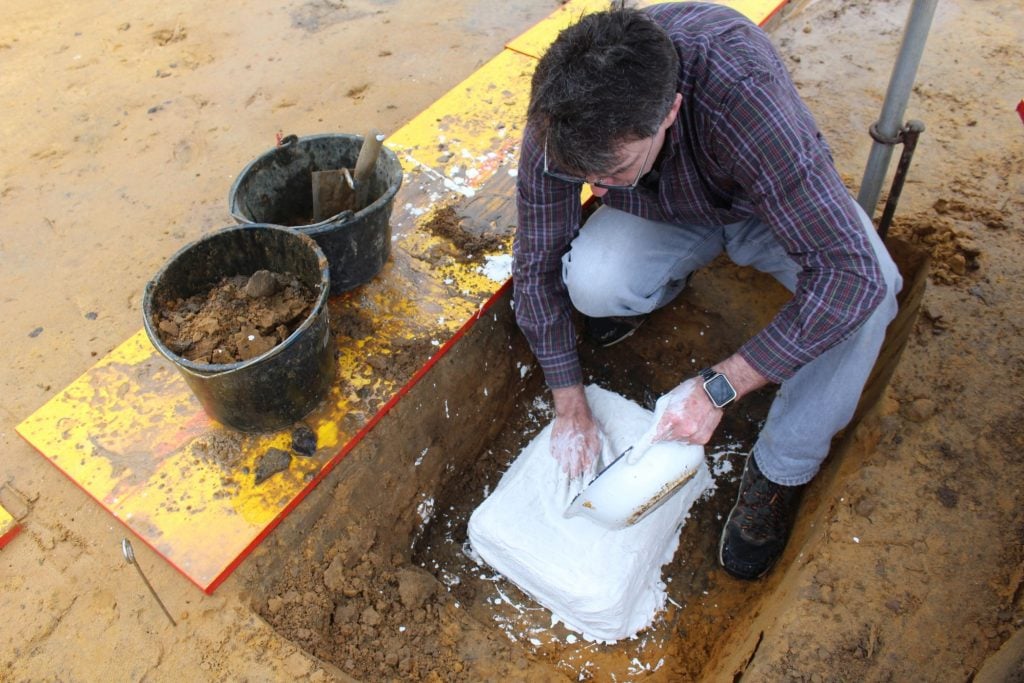
24 Nov A 2,000-Year-Old Roman Soldier's Shoe Just Turned Up in Germany
Source Credit: Content and images from Artnet News. Read the original article - https://news.artnet.com/art-world/roman-soldier-shoe-found-in-germany-2570999
Imagine walking on a bed of 60 nails. That’s how Romans soldiers did it, a recent find in Haltern am See, Germany confirmed. Archaeologists unearthed one long-lost soldier’s 2,000-year old caliga shoe in an ancient trash pit during excavations near a playground close to the former Roman military and civilian colony of Aliso.
The site was only identified in 2010, but museum to Aliso has stood in the area for 30 years. The find still managed to surprise the team, however, since boots like this are rare in Germany, the Landschaftsverband Westfalen-Lippe (LWL) region’s press officer Frank Tafertshofer told me over email. As it turns out, though, another such shoe was found in Germany just last June.

A drone image of the excavation area. The circles mark the posts of the wood-earth wall, and the triangle the site of the shoe nails. Image: LWL/T. Ciesler.
Archaeologists were called in to examine the site before a planned fiber optics installation project could proceed. Given the setting, the experts expected to turn up some relics. Indeed, they initially discovered the “well-preserved post pits” of a bygone wooden wall, according to this week’s press release, as well as two pits once as ovens used to bake bread for residents, and a glass game piece. Then, they noticed two garbage pits nearby, too.
These Roman garbage pits abound across the region. “It wasn’t the first time that we found something in a Roman garbage pit,” Tafertshofer said. “Garbage then, unbelievably valuable to the archaeologists today.” By scouring that trash heap with a compact metal detector, they located the dig’s real treasure—the soldier’s shoe. “Why did we find a boot (actually more of a sandal) of a Roman soldier there?” Tafertshofer continued. “Most likely he dumped it because it was kaputt (garbage) and he had no more use for it.” There were no women soldiers in Rome.

The excavated caliga. Image: LWL/J. Mill rock.
Soldiers wore such caligae to traipse through marshy conditions. These shoes were typically made of leather. Their soles were crafted from hand-forged nails hammered through three layers of the animal hide, forming a sole where the nails’ pointy tips faced down and acted like cleats. At the same time, their flat tops formed a solid foundation for the soldiers’ strides. “Since the legionaries didn’t wear socks, running on the shoe nails who had spent each sole almost worked like a massage,” archaeologist Dr. Bettina Tremmel pointed out in the release.
Although the caliga’s leather had long since decomposed back into the sandy soil, archaeologists found its arrangement of 60 nails still pretty much perfectly intact, rendering their identification all but undeniable. The team removed the entire block of earth containing the precious caliga using plaster, in order to retrieve it from the ground in one piece.

Weisgerber plasters in an earth block to recover it as a whole—with the shoe nails in it. Image: LWL/B. Tremmel.
“The shoe must have been relatively small,” archaeologist Andreas Weisgerber added. “Our focus was also on whether organicism could have been obtained from the iron oxides. Unfortunately, this was not the case. According to the length of the nail mandrel, the sole was about 0.8 centimeters thick.”
Now, the historically significant remnants will go on view amongst the extensive Roman military collection at LWL-Römermuseum, just in time to celebrate St. Nicholas Day on December 6.
Source Credit: Content and images from Artnet News. Read the original article - https://news.artnet.com/art-world/roman-soldier-shoe-found-in-germany-2570999

